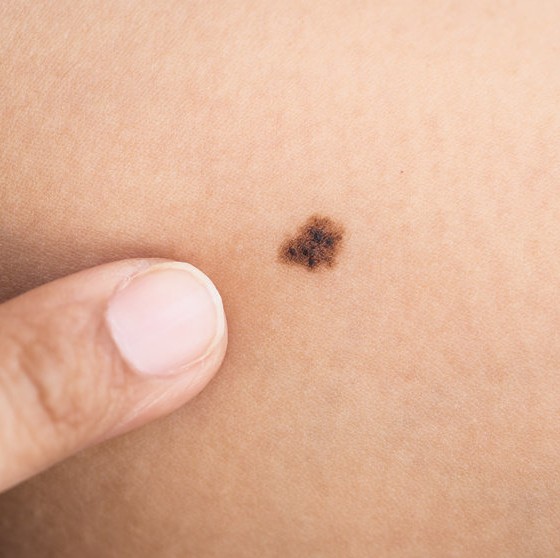A solar lentigo (also known as a sunspot, liver spot or age spot) is seen in almost everyone I see over the age of 60. These spots are caused by sun exposure. This is why they appear in areas that see the sun the most such as the face, shoulders, arms, chest and hands. People who have used tanning beds may have them anywhere. They are usually small (less than the size of a pencil eraser) but occasionally can be quite large (up to an inch in size). They are brown in color with either smooth or irregular borders. This is important to know because a melanoma, a deadly form of skin cancer, often has irregular borders too. It’s important with any pigmented spot to review the ABCDE rule for helping identify those skin growths suspicious for melanoma:
A is for asymmetry: Does one half of your mole look different than the other half?
B is for border: Do the borders look jagged or blurred?
C is for color: Is there is more than one color?
D is for diameter: Is the spot bigger than the size of a pencil eraser?
E is for evolving: Is the spot is changing in any way?
When you are looking at a flat, brown spot on your skin, the most important thing is to distinguish a solar lentigo (sunspot) from a lentigo maligna melanoma. There are several types of melanoma, but this one can fool people. Lentigo maligna is an early form of melanoma that occurs in chronically sun-exposed skin. Lentigo maligna often shows these concerning signs:
Large size: greater than the size of an eraser
Irregular shape
2 or more colors
Smooth surface
When a concerning spot like this develops a raised spot within it, it’s often a sign that the melanoma has progressed in stage. A device called a dermatoscope is used to decide to biopsy brown or black spots. This greatly magnifies the mole to allow to look deep into the pigment of the spot to determine whether it has concerning features.







